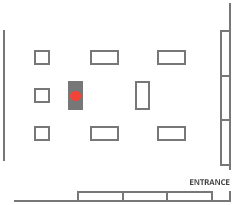 University Library
Right of Way
University Library
Right of Way
 University Library
Right of Way
University Library
Right of Way
City planning is primarily concerned with determining the future organization and physical state of urban spaces in terms of housing, transportation, infrastructure, and more. Scholars often study city planning in Los Angeles with a focus on poor planning decisions made in the past. Los Angeles established the nation’s first land use designation in 1904. Over the next few decades, it formed planning committees and commissions that created its first comprehensive street plan; zoning ordinance and categories; and height, area, density, and parking regulations.
The city took advantage of funds from the Federal Housing Administration, which regulated and insured home mortgages in the 1930's. This effectively tied government planning to private real estate interests and practices, leading to segregation and exclusion of marginalized communities from the home finance system. By the late 1990's Los Angeles had adopted a detailed long-range planning document called the General Plan Framework, which is still in use. Today, gentrification and city revitalization have taken hold in some of LA's most historic neighborhoods, often resulting in physical displacement, social disruption, and serious economic challenges for residents.
On display in this case are documents showing ways community groups have rallied to oppose projects they believed violate cultural values, cause physical harm, or diminish the quality of life, including handouts and correspondence supporting and opposing "slum" clearance, public housing, and community revitalization projects. Also displayed is correspondence protesting the widening and paving of a road over a Chumash burial site, and records regarding the failure of city agencies to enforce laws prohibiting segregation and discrimination in managing the Bunker Hill redevelopment plan.
Case 6, Nuclear Waste, is the flat case closest to you to the south.
1
Press release, "City Council is Urged to Bar Segregation and Discrimination in Bunker Hill Plans," 1956Max Mont Collection
2
Plate, Bunker Hill at Third Street, circa 1890, The Bunker Hill StoryF 869 L8 A4
3
"Redevelopment's Human Equation," February 11, 1959Los Angeles Times
4
Photographs, Interior of Bunker Hill apartment, circa 1950Richard Fish Collection
5
Letter to T.A. Tidemansion, County of Los Angeles Road Commissioner, 1985Susan B. Nelson Collection
6
Photographs, Talepop Demolition and Road Work, circa 1986Susan B. Nelson Collection
7
Letter from Citizens for Slum Clearance, 1952Los Angeles County Federation of Labor Collection
8
Flyer, "Slum Areas Eat Up Taxes...Vote Yes, Proposition C," 1951Los Angeles County Federation of Labor Collection
9
"There's Nothing Sentimental About Your Cash Register," 1948Los Angeles County Federation of Labor Collection
10
Flyer, "Ten Reasons Why You Should Vote Yes on Proposition C," circa 1951Los Angeles County Federation of Labor Collection
11
Flyer, "YES on PROP. C means COMMUNITY BETTERMENT," 1951Los Angeles County Federation of Labor Collection
12
Letter to Community Redevelopment Agency, Hollywood Project, January 7, 1989Los Feliz Improvement Association Records
13
Cities are for People, 1942NA 9127 L7 S3
14
Flyer, Hollywood Redevelopment Project...Meetings, 1987Los Feliz Improvement Association Records
15
Map of Talepop Village, 1981Susan B. Nelson Collection
